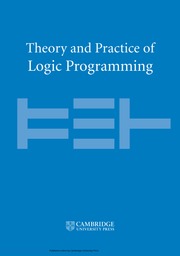Article contents
Optimizing phylogenetic supertrees using answer set programming
Published online by Cambridge University Press: 03 September 2015
Abstract
The supertree construction problem is about combining several phylogenetic trees with possibly conflicting information into a single tree that has all the leaves of the source trees as its leaves and the relationships between the leaves are as consistent with the source trees as possible. This leads to an optimization problem that is computationally challenging and typically heuristic methods, such as matrix representation with parsimony (MRP), are used. In this paper we consider the use of answer set programming to solve the supertree construction problem in terms of two alternative encodings. The first is based on an existing encoding of trees using substructures known as quartets, while the other novel encoding captures the relationships present in trees through direct projections. We use these encodings to compute a genus-level supertree for the family of cats (Felidae). Furthermore, we compare our results to recent supertrees obtained by the MRP method.
Information
- Type
- Regular Papers
- Information
- Theory and Practice of Logic Programming , Volume 15 , Special Issue 4-5: 31st International Conference on Logic Programming , July 2015 , pp. 604 - 619
- Copyright
- Copyright © Cambridge University Press 2015
References
- 10
- Cited by

